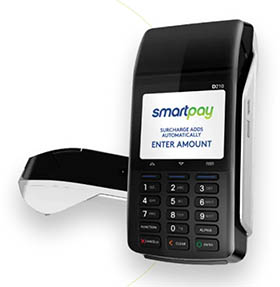6 Ways Payment Systems Have Evolved

It wasn't that long ago when the only way to pay for something was with cash. But in today's world, there are a multitude of options when it comes to payment systems. From credit cards to scanning QR codes, the ways we pay for things have come a long way in a short period of time.
Here are six ways payment systems have evolved.
1. Credit and Debit Cards
The first major evolution in payment systems came with the introduction of credit and debit cards. Credit cards allowed consumers to borrow money from a lending institution to make purchases. Debit cards, on the other hand, drew funds directly from a consumer's bank account.
Credit and debit cards have been around for a while, but the introduction of EMV chips has made them more secure and has led to a massive increase in their use.
 EMV chips are microchips that are embedded in credit and debit cards. These chips create a unique code for every transaction, which makes it much harder for criminals to clone cards or engage in other types of fraud..
EMV chips are microchips that are embedded in credit and debit cards. These chips create a unique code for every transaction, which makes it much harder for criminals to clone cards or engage in other types of fraud..
Businesses only need to have a card reader like Smartpay that's compatible with EMV chips in order to start accepting these types of payments. And as more and more consumers get cards with EMV chips, businesses will have an incentive to make the switch.
2. Contactless Cards
Another evolution in payment systems is the introduction of contactless cards. These are credit and debit cards that have an NFC chip, which stands for near-field communication. This allows the card to be read by a special reader without actually having to make physical contact with it.
This is beneficial because it makes the process of paying for something quicker and more convenient.
However, it also raises some security concerns. Contactless cards are more vulnerable to being skimmed, which is when criminals use a device to read the NFC chip on the card and then use that information to create a clone of the card.
3. Peer-To-Peer (p2p) Mobile Applications
Peer-to-peer mobile applications have made it super-easy to send and receive money. These apps, such as Venmo and Cash App, allow users to link their bank account or debit card and then send or request money from other users.
This is a convenient way to split a bill with friends or family, pay for goods or services, or simply send money to someone. And since the transactions take place electronically, there's no need to exchange cash or cheques.
These applications are sometimes also integrated with third-party services, such as Uber, so that you can pay for your ride without having to pull out your wallet.
3. Mobile Payment Apps
In addition to peer-to-peer mobile apps, there are also a number of mobile payment apps that allow you to make purchases with electronic wallets through your smart phones.
Apple Pay and Google Pay are two of the most popular examples of such apps. They are available on all Apple devices and Android devices, respectively. And they can be used to make purchases in stores, online, or within apps.
Samsung Pay is another mobile payment app that's available on Samsung devices. It can be used in a similar way to Apple Pay and Google Pay, but it also works with Magnetic Secure Transmission (MST) technology, which allows it to be used at merchants that don't have NFC readers.
4. QR Code Payment Systems
QR code payment systems have become increasingly popular in recent years. These systems allow you to make a payment by scanning a QR code with your smartphone.
The QR code will typically be generated by the merchant and will be linked to their payment processor. To make a payment, you simply open up your QR code scanner app, scan the code, and enter the amount you wish to pay. The funds will then be transferred from your account to the merchant's account.
QR code payment systems are convenient because they don't require you to carry any cash or cards. They're also becoming more and more popular, as more businesses are beginning to accept them.
5. Blockchain and Digital Currencies
Introduced in 2008, Blockchain is a major evolution in payment systems. It's a decentralised, distributed ledger that records transactions chronologically and publicly.
This means that Blockchain is not controlled by any central authority, such as a bank or government. And because it's public, anyone can view the transaction history of a particular Blockchain.
Bitcoin, introduced in 2009, was the first digital currency to be built on Blockchain technology. And since then, a number of other digital currencies have been created, such as Ethereum, Litecoin, and Ripple.
Digital currencies are becoming increasingly popular as a way to send and receive money. And because they're not controlled by a central authority, they offer a level of freedom and independence that traditional fiat currencies don't.
For example, Bitcoin can be used to make purchases anywhere in the world, regardless of country borders or currency restrictions.
In Conclusion
Payment systems have come a long way in the last few years. And they are likely to continue evolving as new technologies emerge.
If you're a merchant, it's important to understand the different types of payment systems so that you can choose the one that's best for your business.
Also, make sure your business is equipped to accept the type of payments your customers want to use.
Image Credit Unsplash Christiann Koepke
MORE





